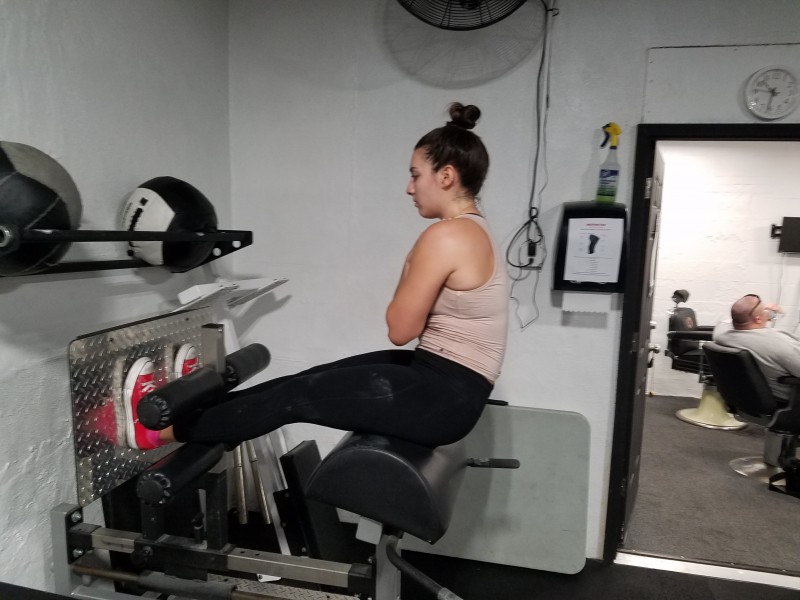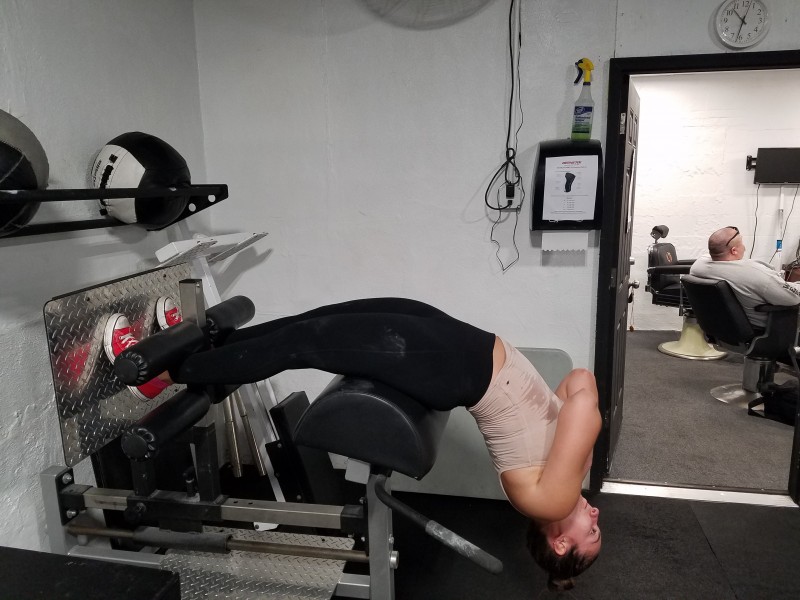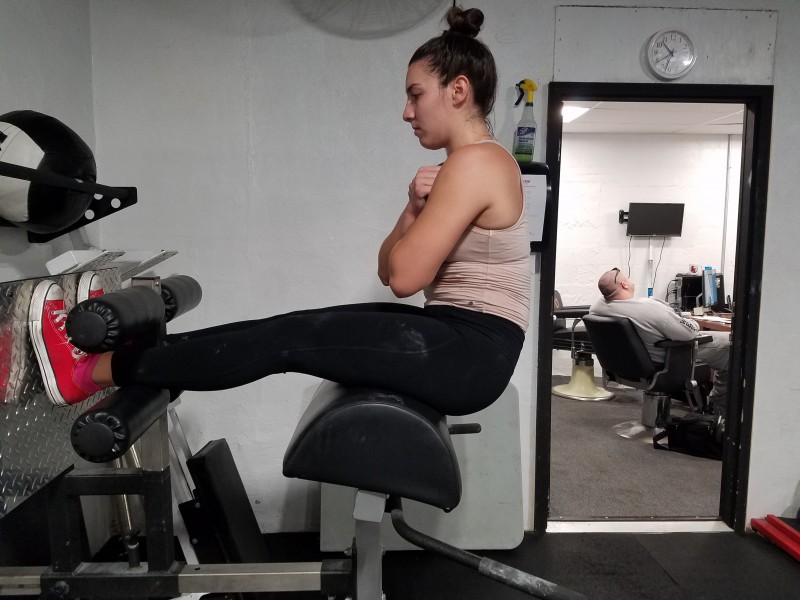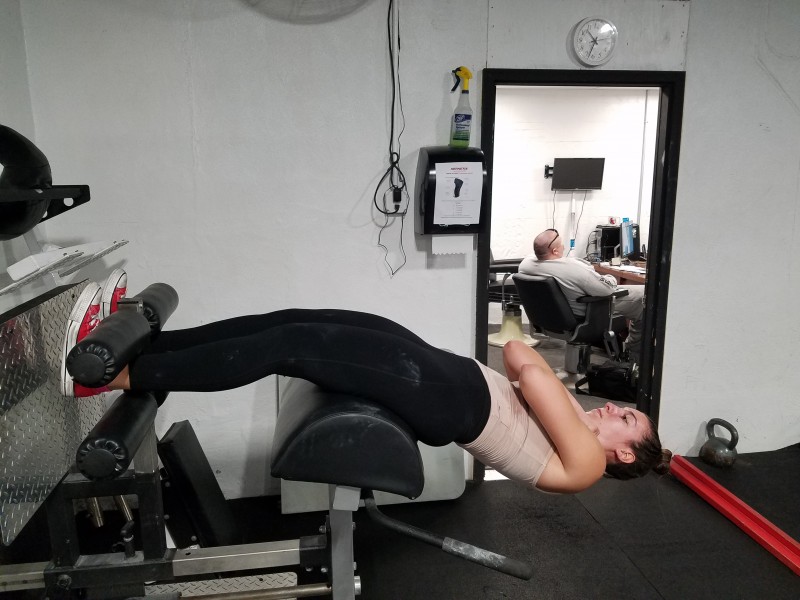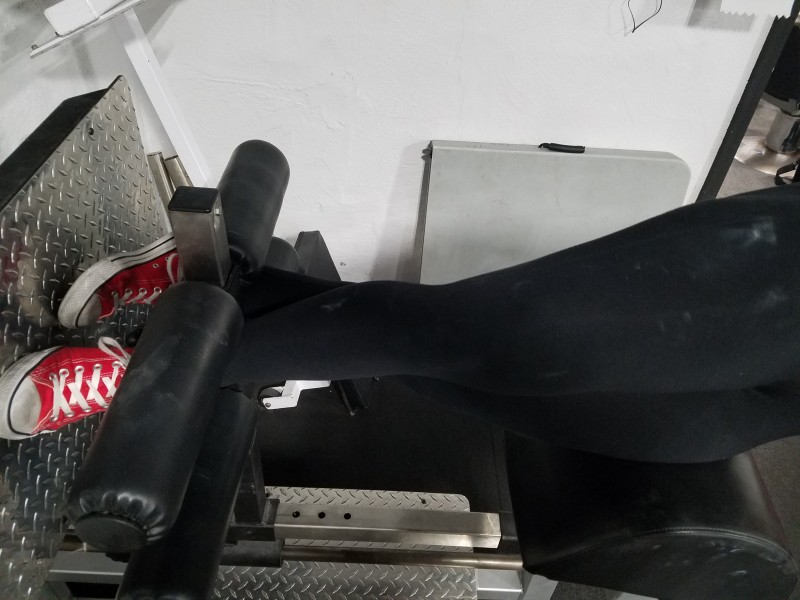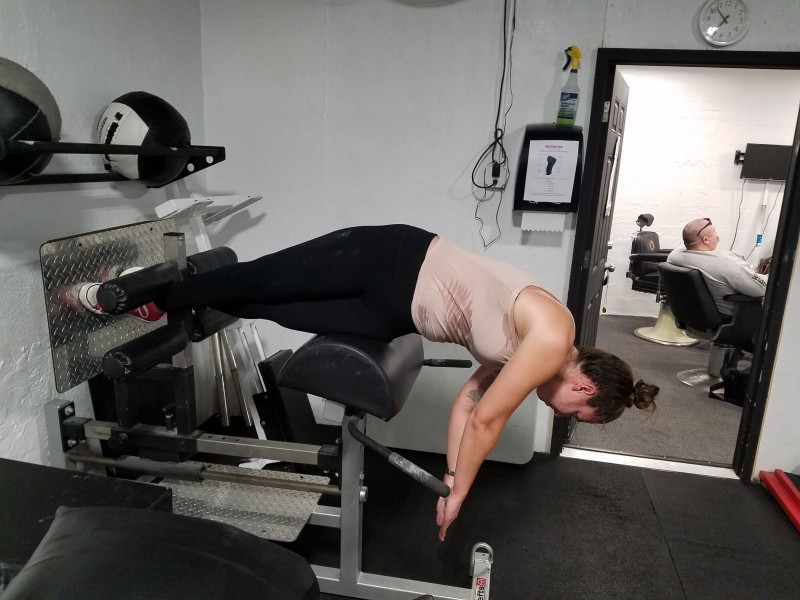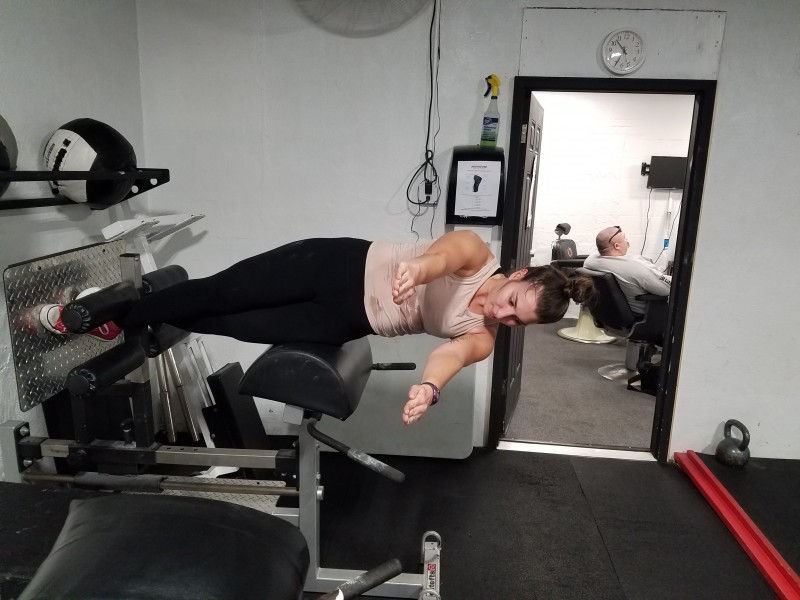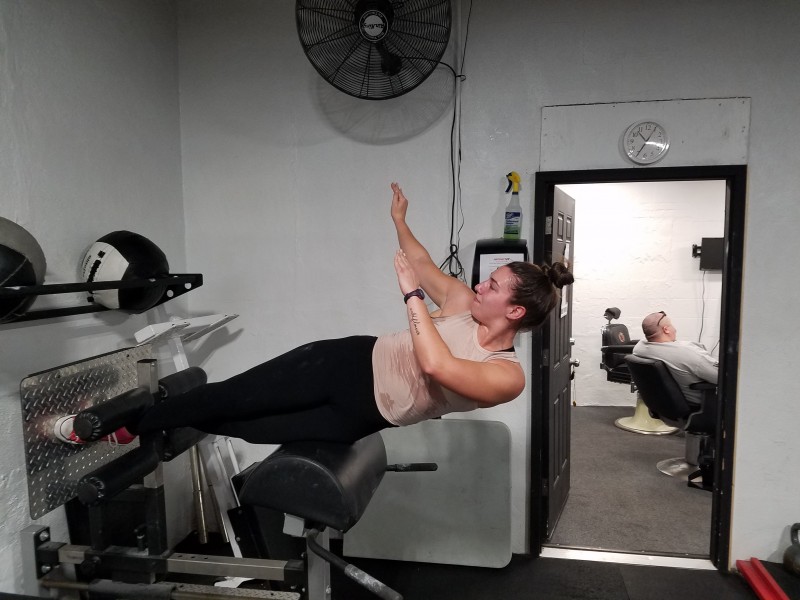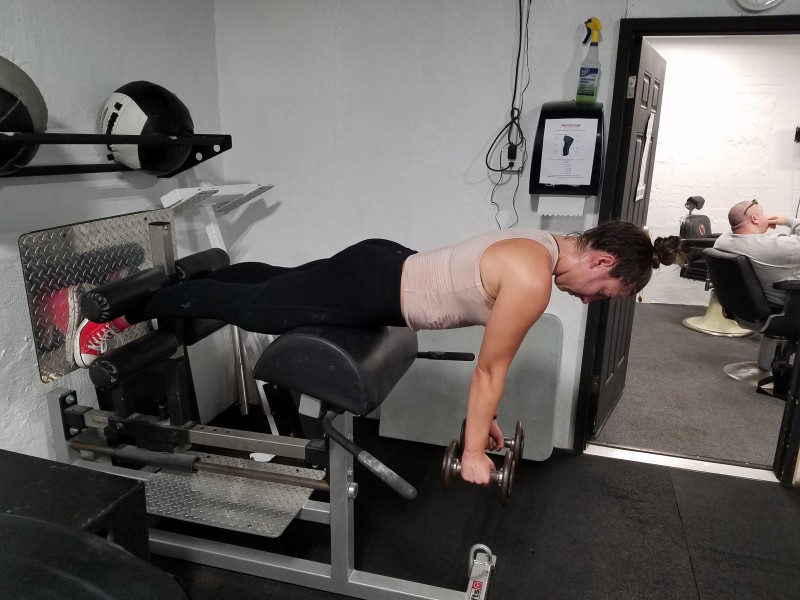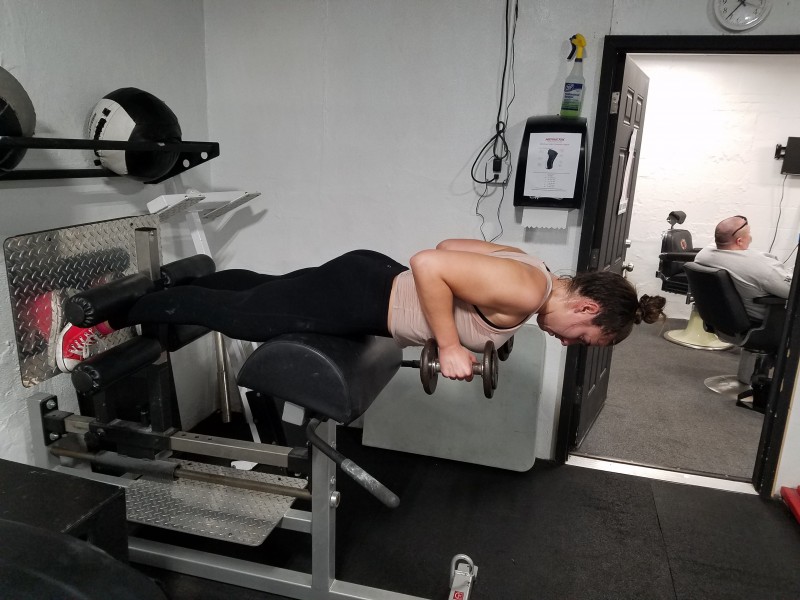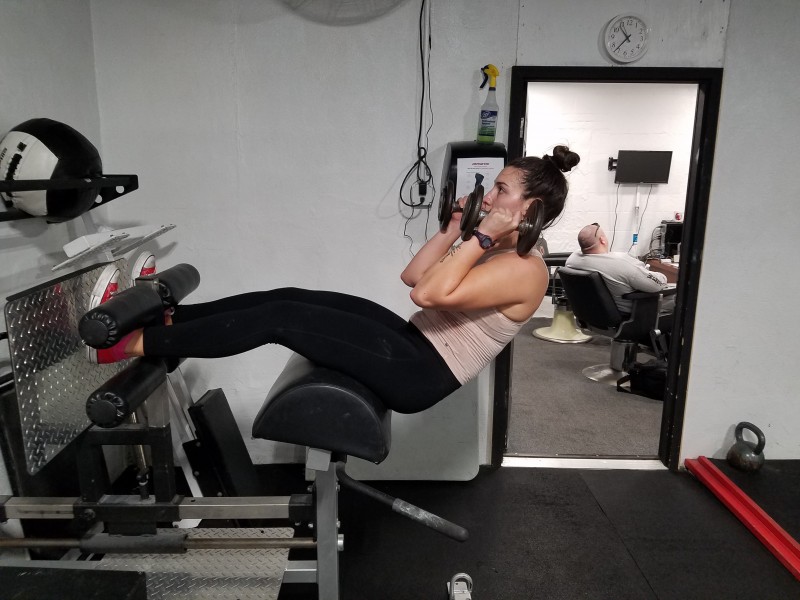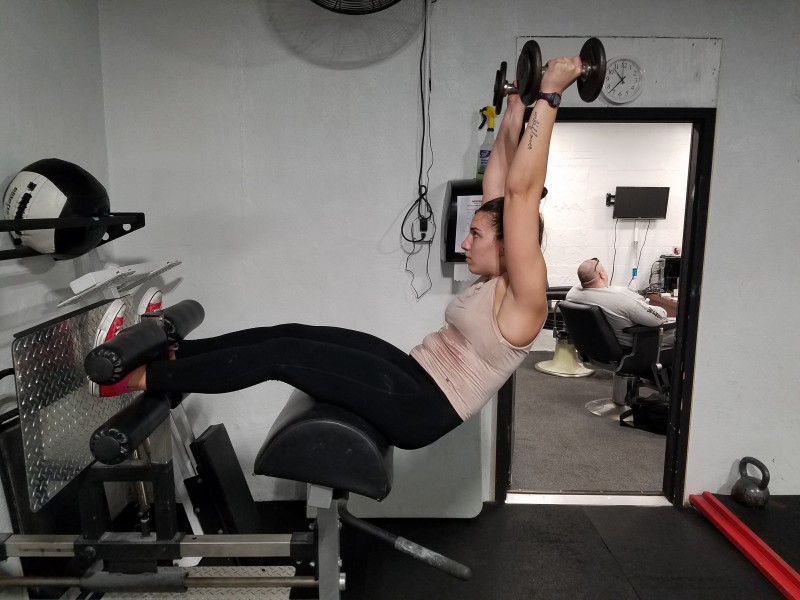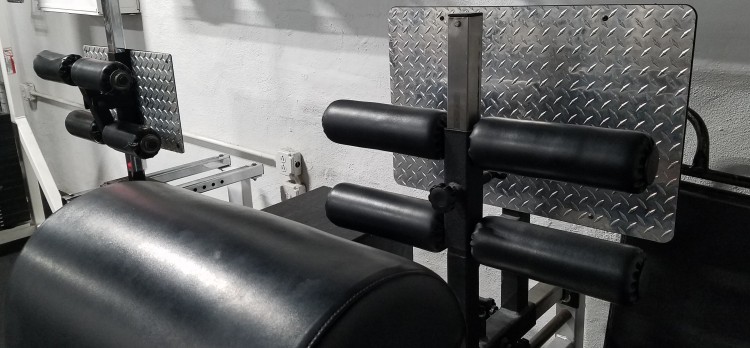
I love the GHR bench. It builds your posterior chain (glutes, hamstrings & lower back) like nothing else.
The GHR is the only exercise that initiates a unilateral co-contraction of the hamstrings at the origin and insertion
(in the words of Dr. Fred Hatfield). This means it is the only exercise the fully contracts the hamstrings at once.
It also brings the entire posterior chain together and fires it as a unit as it should be.
This makes it a superior exercise for building your:
- Squat
Deadlift
Clean
Snatch
Sprints
And many more
You can also regress and progress the exercise in virtually unlimited ways so you never adapt to it.
BUT
If you are only using the bench for GHR’s, you are missing out on a lot of progress. I am going to give you a short list of things you can do on the bench that will add variety to your training as well as results.
Here are the 5 Things to Do on a Glute Ham Raise Bench Besides GHR’s:
- GHR Situps
Water Tosses
Back Raises/Back Raise-Row
Hatfield Back Raise
Diesel Press
Now, I could have stopped with just a list, but since you probably don’t know some of these, let’s go over them.
These are exercise that we have been using at TPS with athletes, lifters and PT clients since the beginning.
You see, when we started TPS was in 900 square feet and we needed to choose equipment that had a high yield. That means that every piece needed to do a variety of exercises to maximize results for our clients and not take up a lot of floor space.
The GHR was on the required list right after a Power Rack and a Utility Bench.
It’s that important.
Let’s review each exercise and give you a brief description on how to do them.
GHR Situps:
The GHR Situp is one of my favorite ab exercise and the one that makes me cringe about 95% of the time when I see people doing them or watching a video.
When done properly, this is a very safe exercise that yields results.
The way most people do them is a virtual guarantee that they will be seeing a chiropractor or orthopedist in the future.
The most common thing I see is that they don’t set the bench up correctly and they use an exaggerated range of motion. One of these alone is bad but when both are in place it is a disaster waiting to happen.
Setting the bench up:
It is critical that you set the bench up right. The footplate needs to be adjusted so that your feet are above your hips and your butt is off the bench a little.
If you set the plate up with your feet below the hips you are ensuring that you will place your back in a dangerous state of hyperextension and injure it.
How to do it:
It’s a simple exercise to perform, but it’s not easy. There is a big difference between simple and easy.
It is simple because there is not a lot of technique to it.
Simply get on the bench, hook your feet in and then slowly lower yourself down to the point where your body is a straight line.
Pause slightly then explode up, or come up slow depending on your goal.
NEVER BOUNCE OFF THE BOTTOM
NEVER GO INTO AN EXAGGERATED RANGE
Water Tosses:
I love these.
There is a lot of shit in the industry now about rotational exercises being bad for you, but I disagree. All we hear about is stabilizing and bracing for everything.
The muscles in the torso affect movement on the spine and should be strengthened. There is a time to brace and stabilize, and there is a time to move.
Athletes rotate in sports, and we rotate in life all the time. Golfers rotate, pitchers rotate, MMA and Fight Sports athletes rotate, we all rotate when doing ADL’s (activities of daily living).
This is not a beginner exercise and is not appropriate for everyone. If you’ve got a lumbar disc issue/injury avoid it, but if you are healthy…….do it.
Shouldn’t we train this movement?
How to do it:
Adjust the bench so that your hips are firmly on the pad. Let’s start with the right hip on the pad and the left hip up to the ceiling.
Place your right leg in the pad above your left leg and hold your body 90 degrees to the floor like a side plank and extend your arms.
Now, imagine that you were rotating to pick up a bucket of water on the ground below you to the left, pick up the bucket and rotate as if you were throwing over your right shoulder.
When it’s time to switch sides, simply roll your right hip to the bench and get on your left hip.
Your feet will be in the correct position after you roll over, no need to get off the bench in between sides.
Back Raises/Back Raise-Row:
The Back Raise is a staple in training and is usually called a hyper extension. I hate that name as it leads people to believe they should hyper extend the spine.
You should not hyper extend the spine.
The great thing about using the GHR bench for these is, as the Yuppies say, scalability.
The Back Raise is an awesome posterior chain exercise that can be programmed with limitless variety and for many goals. Using the GHR bench allows you to dictate what muscle does the most work.
Note I didn’t say “isolate”?
If you set the footplate up so that your hips are fully supported and on the bench, your lumbar spine will take over.
If you set it so that your hips are off the bench and forward of the pad you will make the hamstrings do more work.
Watch the video on the GHR below to see how to do a Back Raise.
Now, to build on the this we can add in something new and really get work done in a short amount of time.
Enter the Back Raise/Row.
This is one of my big bang for the buck all time favorite accessory movements.
How to do it:
All you do is set up to do a Back Raise with some dumbells or a barbell on the floor, get to the bottom position of a Back Raise, and grab the dumbells at arm’s length.
Perform a Back Raise with your arms locked, pause at the top of the back raise with your glutes LOCKED and then row.
You can either do a rep with a Back Raise and then a Row, or you can statically hold the Back Raise and do multiple Rows.
Hatfield Back Raise:
Dr. Fred Hatfield credits this as one of the top exercises in his arsenal when he trained for his legendary 1000-pound squat.
Instead of reading, just watch the video.
Diesel Press:
Boom.
This is a killer.
I stole this one from Jim Smith of the Diesel Crew because it’s AWESOME.
You can smash your abs and torso stabilizers while getting your upper body accessory work done at once.
How to do it:
Set up on the bench as if you were doing a GHR Situp and hold a pair of dumbells at your chest.
Lean back to about 45 degrees your first time and stabilize the shit out of your body, then, PRESS!
Keep your body locked in place as long as you can. When you can’t hold the position any longer but you have reps left to go, simply sit up a little and finish.
As you get better at this, you can lower the angle of your body and get closer to the floor.
This is not a beginner exercise!
There you have it.
5 Things to Do on a Glute Ham Raise Bench Besides GHR’s.
What are you waiting for?
Ask me a question-Be sure and Type to Murph in the header
Find me on Google-search for Total Performance Sports Malden, Mass. The Best Gym in Boston, Facebook too.
Oh, yeah, follow us on Instagram too. TPSMalden
SHARE THIS!
#bostonsstrongest
Vincere vel mori









